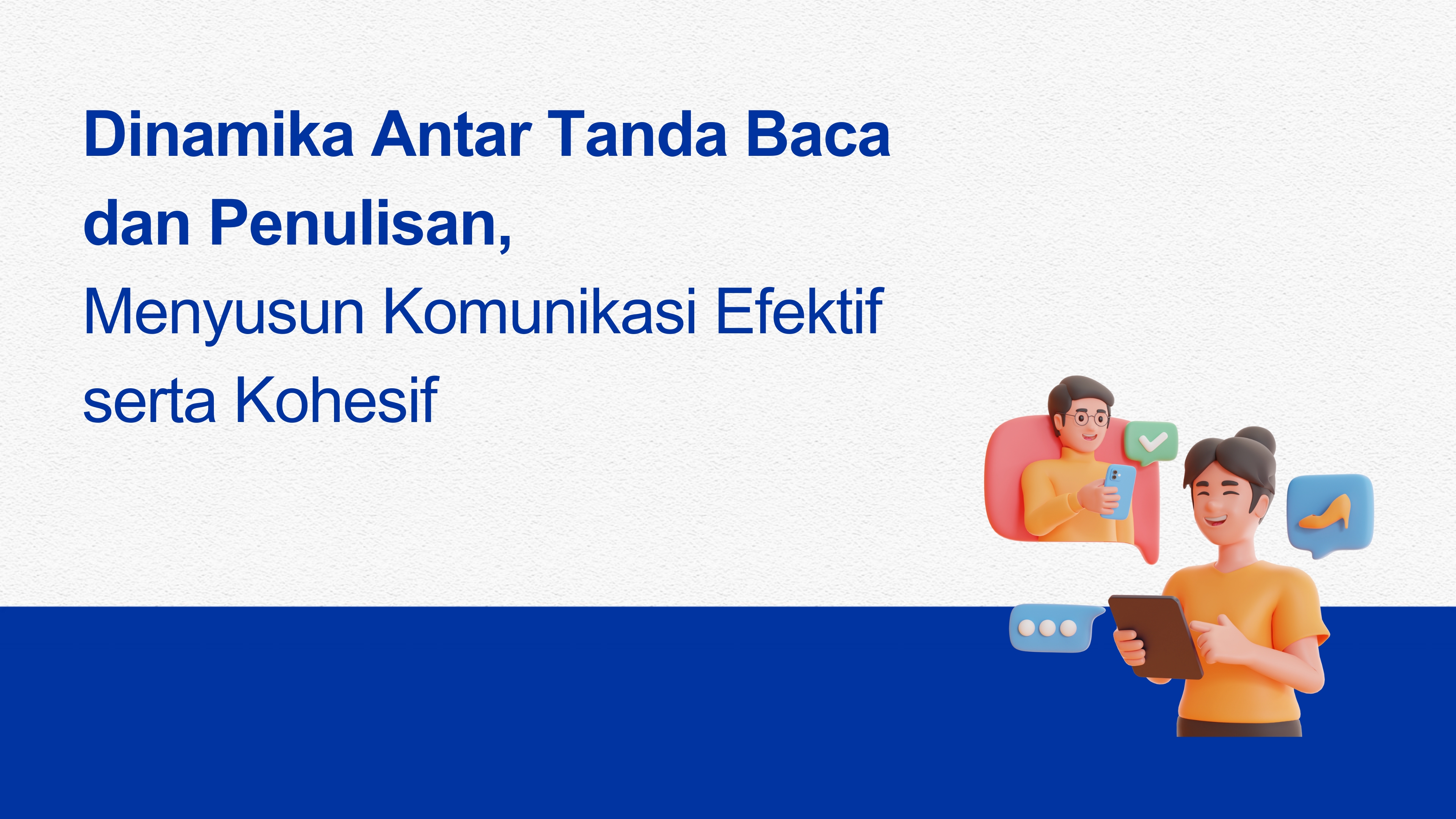The Dynamics of Punctuation and Writing: Crafting Effective and Cohesive Communication

Language plays a crucial role in conveying messages between individuals or groups. In language, there are several aspects to consider in constructing a sentence. This is because the use of punctuation affects how one perceives and comprehends a statement, as explained in the branch of Linguistics known as Semiotics.
Semiotics is the study of signs and sign systems in various forms of communication. It examines how signs function to create meaning in different contexts, whether in language, images, symbols, or even everyday actions. Semiotics is an interdisciplinary field that includes the interpretation of meaning from a sequence of words received by the listener. In language, semiotics can assist in the interpretation of meaning through punctuation.
With the advancement of communication via social media, a certain level of equality in communication can be achieved across society. However, one of the issues present in social media communication, similar to other forms of written communication, is the errors that arise from the incorrect placement or absence of punctuation.
As social media evolves, communication culture inevitably undergoes constant change. This development also impacts communication patterns, particularly among Generation Z. The use of punctuation in writing can aid communication because, unlike spoken words, written text cannot be interpreted with the natural intonation of voice. The interpretation of a written sentence tends to be subjective, depending on whether punctuation is applied correctly. The interpretation of written text can only be aided by the use of punctuation marks such as periods, exclamation points, commas, and others.
As is well known, in language and the use of punctuation in conversations, especially in the digital world, the use of periods, exclamation points, question marks, and commas can influence the flow of a conversation and the intended intonation. However, at the same time, the tendency of Generation Z to perceive their messages before sending them, which leads to issues such as:
-
Ambiguity: Without punctuation, sentences can become ambiguous because there is no clear way to know how the words are connected. For instance, "Let's eat, children" and "Let's eat children" have vastly different meanings depending on punctuation.
-
Rhythm and Intonation: Punctuation marks such as commas, periods, and question marks help regulate the rhythm and intonation of reading. Without punctuation, readers might not grasp how a sentence should be read or spoken, disrupting the flow and comprehension. Punctuation helps separate ideas and information. Without it, information can overlap or become disorganized, making the text harder to follow and understand.
-
Emphasis and Focus: Punctuation also helps emphasize certain parts of the text, allowing readers to understand what is important or needs attention.
-
Context and Connection: In lengthy or complex texts, punctuation helps indicate how ideas or information are related. Without punctuation, readers may struggle to understand the references between sentences or paragraphs.
The lack of punctuation use in text by Generation Z is often due to the concept of "saving time." Additionally, the use of stickers as a linguistic method for communication can create an effect of instant gratification, shaping the perception of communication methods as easy-to-use. This diminishes the necessity for text, reducing the use of written language and lowering the understanding of proper punctuation placement. Generation Z also has a habit of frequently using constantly changing language terms to quickly convey messages without excessive detail.
Nevertheless, using punctuation can save a conversation anywhere. This is because written messages can be interpreted differently, depending on the recipient and their mood when the text notification appears. Therefore, punctuation in written text is crucial, especially in the context of writing a final project, where a research report and writing style will influence the outcome during the Q&A session with academic writing examiners.
(Kornelia Johana / Humas UNDIRA)
Press Contact :
Biro Humas & Sekretariat Universitas Dian Nusantara
Facebook : www.facebook.com/undiraofficial
Instagram : www.instagram.com/undiraofficial
Twitter : www.twitter.com/undiraofficial
www.undira.ac.id

Campus Tanjung Duren
Jln. Tanjung Duren Barat II No. 1
Grogol, Jakarta Barat. 11470
Campus Green Ville
JIn. Mangga XIV No. 3
Campus Cibubur
Jln. Rawa Dolar 65
Jatiranggon Kec. Jatisampurna, Bekasi. 17432










